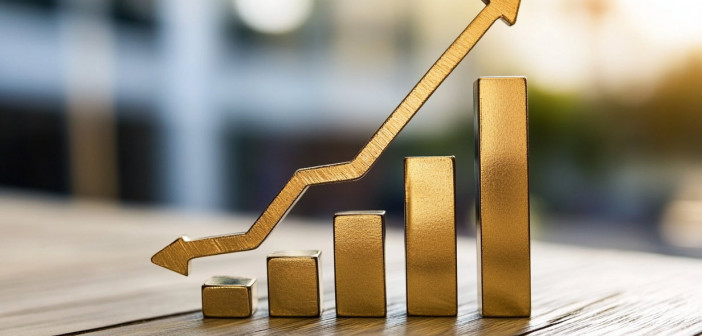Despite calls by the president for lower interest rates, the central bank kept borrowing costs steady to keep inflation in check.
The Federal Reserve left interest rates at their current levels as the central bank continued to assess the impact of President Donald Trump’s tariffs on the U.S. economy.
The federal funds rate remains in the 4.25-to-4.5% range.
But the central bank’s latest outlook spells out a stagflationary environment resulting from the import duties, with inflation heading higher even as overall growth trends lower.
In their latest statement, Fed policymakers said that the unemployment rate remains low and that labor market conditions are solid.
But inflation remains somewhat elevated, they said — and it is likely to worsen: They lifted their forecast for the pace of price growth in 2025 from 2.7% to 3%, while overall economic growth is now likely to fall to 1.4% from a previous forecast of 1.7%.
They also predict slightly higher unemployment, rising to as much as 4.5% for the year from a previous estimate of 4.4%.
The central bank maintained its forecast of two rate cuts for the rest of the year.
The Fed is essentially stuck, caught between fears of accelerating price growth. At the same time, there are growing signs of a job market slowing down.
That makes fulfilling its official mandate difficult. The Federal Reserve is tasked by Congress with keeping both unemployment and inflation low. It helps do that by controlling the cost of borrowing money. By making it more expensive for businesses and consumers to take out loans, the Fed seeks to control how fast the economy expands. Higher interest rates are designed to control inflation, while lower rates spur business expansion and job growth.
One of the most alarming signals of that sluggishness can be found in the measure of continuing jobless claims, or filings for unemployment insurance by people who have been job-hunting for multiple weeks. Last week, the number climbed to just short of 2 million, the most since November 2021.
While the figure is still low by historical standards, the trend is unmistakable. At the same time, hiring rates remain at lows not seen in more than a decade.
“The labor market looks fine on the surface, but the trajectory is concerning,” Preston Mui, senior economist at Employ America, a research group that advocates for full employment, wrote in a note published Monday.
Mui noted that labor force participation and overall employment are declining. “There are a lot of stories you can tell about why the labor market will crack,” he said, “but few reasons to believe it will pick up or continue to move sideways if the current policy trajectory continues.”
Even with a worsening employment picture, analysts say the Fed remains focused on clamping down on inflation. It’s why Wall Street traders put the odds of a June rate cut at essentially zero, with about an 80% chance that rates will also remain unchanged through July.
That hasn’t sat well with Trump, who has continued his call for lower interest rates, asserting there is no inflation. It is true that parts of recent inflation reports have come in milder than expected. Meanwhile, the decline in retail spending last month was worse than expected, suggesting that the economy continues to slow and that borrowing rates may be unnecessarily slowing consumption.
Still, other surveys show upticks in prices being paid by businesses, most likely in response to tariffs. Other analysts say it’s simply too soon to see the accelerated price growth given the on-again, off-again tariffs rollout and the fact that many businesses and consumers moved up their purchases to get ahead of the import duties.
“We still expect to see some abnormally large increases in goods prices by later in the summer,” Citi analysts said in a note this week. “Some sign of tariff impact could be seen as soon as June in components like autos.”
Yet the Citi analysts also warned there is another possibility: that demand is too weak for businesses to significantly pass on higher tariff costs. They note that over the last few months, prices for services like airfares, hotels and recreation have been very weak.
“Soft demand suggests a lower likelihood that any price increases from tariffs will lead to persistent inflationary pressure that spreads to services and non-tariff impacted goods,” they wrote.
In general, the nature of consumer price data makes it hard to know how well and how fully higher prices from tariffs will be captured, they wrote. That raises the possibility that Trump will be proven correct and that the Fed should have lowered rates sooner.
Whatever the case, the economic backdrop is worrisome, said Mark Zandi, chief economist at Moody’s Analytics.
“The economy is going to get uncomfortable for the remainder of the year,” he said, noting the likelihood that inflation would rise even as overall growth slows, while it also remains vulnerable to external shocks like the Middle East conflict.
“I don’t see the economy kicking back up for a long time,” Zandi added.




